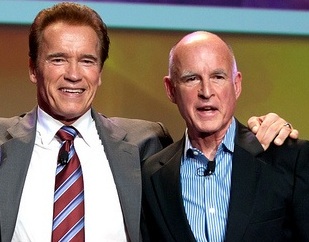CalGreen: California's new sustainability code is coming your way

If it’s a groundbreaking new environmental rule, it’s got to be from California.
No, I’m not talking about the contentious cap-and-trade rule unveiled last week. Just as important for slashing greenhouse-gas emissions is CalGreen, a.k.a. the California Green Building Standards Code, which took effect early this year. One of Arnold Schwarzenegger’s last big moves, it’s the first statewide green building code in the country, and its reach will ultimately affect most new and refurbished buildings there.

In a recent twist, Gov. Jerry Brown has thrown his political capital behind the law. Early this month he signed a new bill to bolster the green building rules: AB 930 now requires at least one member of the state’s powerful Building Standards Commission (BSC) to, um, actually know something about sustainable design, construction and facility operations.
I’d say that’s a good idea. And in spite of ongoing and at times vehement opposition, I’d say CalGreen is a good thing, too. Experts peg the reduction in greenhouse-gas emissions at 3 million metric tons -- all by 2020, and all by way of CalGreen. And if history teaches us anything, CalGreen is coming to a building department near you.
Here’s why: The knocks to CalGreen aren’t coming from architects, engineers or even construction executives. They get work applying the rules. Instead, it’s coming from knee-jerk anti-government types on one hand and, on the other, from green-building advocates. The greenies complain that the new code is flawed and even worse, redundant. We already have national certification programs, they say, like the U.S. Green Building Council’s popular but expensive LEED rating system.
Overlapping green programs
Point well taken. Add to LEED and municipal initiatives the International Green Construction Code, coming in 2012 from the powerful International Code Council, which controls all U.S. code language. Then we have also-rans like Green Globes, a program originally launched by forestry executives and homebuilders.
Wait, there’s more. Before CalGreen, San Francisco was already living large with BIG, the Build It Green program, which has tried to promote its GreenPoint rating system for homes beyond the Bay Area. Another is California Advanced Homes Program, created by the big three utilities Pacific Gas and Electric, Southern California Edison, and San Diego Gas & Electric and set to expire next December. Last, the CHPS program isn’t for motorbike-riding cops but rather the successful Collaborative for High-Performance Schools initiative.
So maybe CalGreen is redundant -- but not because of its peer group. “California already has the strictest energy conservation code in the country,” said Imad Naffa, a code consultant in Fresno, Calif., “and compliance with the energy code will ensure compliance with the majority of CalGreen’s requirements.”
Title 24: Stepping stone for Calgreen?
Known widely as Title 24, the state’s Energy Efficiency Standards for buildings have already made the Golden State’s building stock by far the greenest of any state.
Which brings me to my main point: Title 24 has become hugely influential, adopted around the country by government agencies, housing boards, manufacturers, and local jurisdictions. It became an easy benchmark and implementation model. Many building codes already bear the West Coast stamp, among the first sweeping energy policies of the modern era, launched in 1978.
CalGreen will likely grow in influence this way, too. Wisely, California’s BSC has made it more than a building code -- CalGreen is also positioned as a marketable green-building rating system, like LEED. Buildings that comply get a CalGreen stamp of approval, which should boost rents and property values.
We’ll see CalGreen reach into even states with very different politics and environmental goals. Using the same web of influence spun by Title 24, CalGreen is poised for real and lasting impact.
This post was originally published on Smartplanet.com